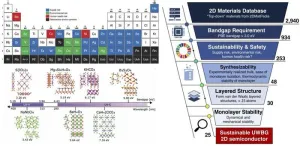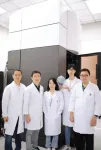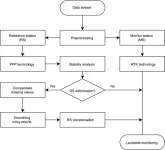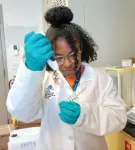To an everyday consumer, the best gadgets on the market have the highest speed, the largest memory, and the longest battery life. Chasing this demand, the forefront of research often only considers these tangible performance metrics when innovating and designing next-generation electronics. In the wake of this technological stampede, the long-term environmental impacts lie obscured and neglected under the dust.
Researchers at the Singapore University of Technology and Design (SUTD) hope to be the catalyst for sustainability-driven science. Assistant Professor Ang Yee Sin from the Science, Mathematics and Technology (SMT) faculty notes that many materials found in conventional semiconductor devices come from environmentally damaging extraction processes, are high-risk pollutants, or pose severe human health hazards.
“The material-level sustainability of semiconductor device technology is largely ignored. Furthermore, many elements used in semiconductor devices are expected to be depleted within the next 100 years,” he added, raising concern over long-term, end-to-end sustainability.
With these considerations in mind, his research team proposed a new unifying framework identifying low-risk materials for further development. Three primary questions guided their approach: (1) How plentiful are the raw ingredients?, (2) How can we obtain them?, (3) What is their fate at the end of their operational lifetime?
“In the long run, electronics should also be ‘climate-driven’. The raw ingredients of semiconductor technology and electronics must be compatible with the global climate change agenda,” said Asst Prof Ang.
Asst Prof Ang and his team sought collaborations with researchers from the United States, China, and Malaysia. Their findings were published in a paper titled, ‘Toward sustainable ultrawide bandgap van der Waals materials: An ab initio screening effort’, in Advanced Functional Materials.
In their study, they focused on state-of-the-art computational methods used to supplement the growing field of nanostructures and ultrathin 2D materials. With the advent of modern supercomputing systems, comprehensive databases, and high efficiency software, simulation-informed computational screening has become a popular accessory in accelerating 2D materials formulation. This approach shortlists candidate materials for precise experimental prototyping efforts.
However, researchers are often deterred from looking into environmentally safe options, believing that enforcing sustainability-driven screening criteria could substantially reduce the number of available strong contenders for specific applications and lead to poor performances in the final product.
To demonstrate the viability of sustainable materials research, the team published an analysis of possible constituent materials available for sustainable design of ultrawide bandgap (UWBG) semiconductors. This particular class of semiconductors plays a pivotal role in many applications—from transistors found in computers and smartphones to electronics in vehicles and UV sensors in fire detectors and healthcare technologies.
In their study, the team imposed stringent constraints on the search for ideal materials. These materials must not pose risks to the environment, are non-hazardous to human health, and are in no danger of depletion. In addition, they must fulfil the key requirements for serving as UWBG semiconductors: they must be suitable for low-power standby operation, are mechanically robust, and can perform well as UV detectors. The team also wanted materials that can be easily synthesised in the laboratory to ensure accessibility for deeper research.
Under these search conditions, the researchers systematically consolidated candidate materials and performed quantum-inspired calculations from the fundamentals (ab initio) to ensure consistent accuracy and performance. From an original 3,000 entries in the materials database, the search algorithm sieved out a mere 25 remaining candidates. Based on previous studies, these candidate materials have been found to exhibit high performance over a broad range of applications.
“Our material screening framework focuses on not only application scenarios and key performance indicators, but also the sustainability criteria which eliminate materials composed of high-risk elements. This framework allows us to identify material candidates that demonstrate high performance and are also sustainable at the material level,” explained Asst Prof Ang.
The team’s findings show that sustainability-driven research is possible, achieving balance between performance and sustainability. Asst Prof Ang emphasised the importance of their work: “Our sustainability-motivated material screening framework can serve as a critical tool to search for the building blocks of a greener electronics landscape, where devices are not just faster, lighter, cheaper, and have a longer battery life, but also friendly to the environment and human health.”
Going beyond their demonstration, Asst Prof Ang is confident that the framework developed can be employed to other classes of materials. With growing awareness of the anthropological burden on the environment, the research provides an exciting platform for scientists, engineers and researchers to rethink next-generation technologies and its compatibility with global green agendas.
Asst Prof Ang is eager to generalise their innovation in materials screening to other 2D materials. The team’s long-term goal is to categorise and score 2D materials by their environmental impact to provide a holistic guideline that can further inform future studies.
END






